The world of energy-efficient architecture hosted by Frankfurt/M.
during the 13th International Passive House Conference 2009
- A Review
Darmstadt/Frankfurt, May
14th 2009 - In April more than 1,200 experts from
over 50 countries attended the 13th International
Passive House Conference in Frankfurt/Main. The 16 working
groups (German/English) dealt with topics such as climate
protection policies, refurbishments, non residential buildings
and new applications of the Passive House standard. Additionally
to the conference, the Passive House exhibition - with more
than 4,000 visitors in the exhibition hall - confirms that
Passive Houses are not at all an exotic feature, but a building
concept available to all people.
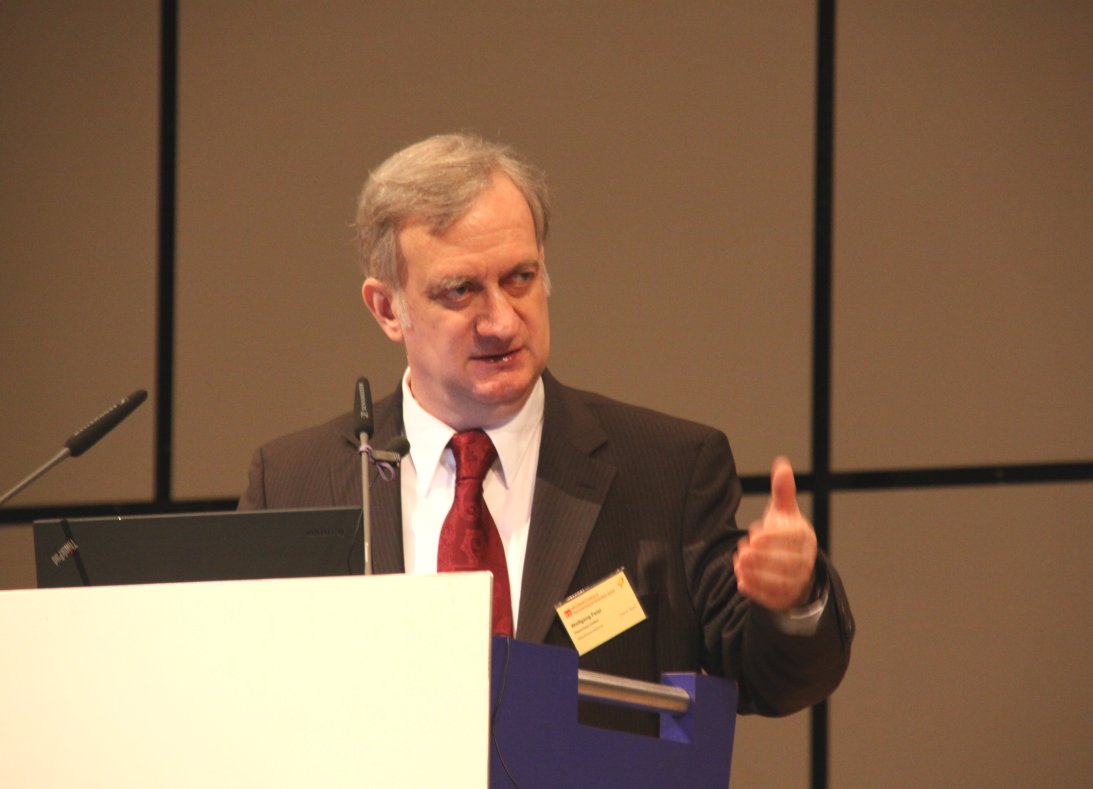 "Today, the motivation comes from all over the European
Union. Almost all EU member states have Passive House initiative
groups and have already completed their first demonstration
projects. The idea has quickly spread around the globe. At
this conference, we will be discussing projects in Sri Lanka,
product developments from Belarus, and new approaches in China,
"explained Prof. Dr. Wolfgang Feist, Director of the
Passivhaus
Institute and Professor at Innsbruck
University (Photo).
"Today, the motivation comes from all over the European
Union. Almost all EU member states have Passive House initiative
groups and have already completed their first demonstration
projects. The idea has quickly spread around the globe. At
this conference, we will be discussing projects in Sri Lanka,
product developments from Belarus, and new approaches in China,
"explained Prof. Dr. Wolfgang Feist, Director of the
Passivhaus
Institute and Professor at Innsbruck
University (Photo).
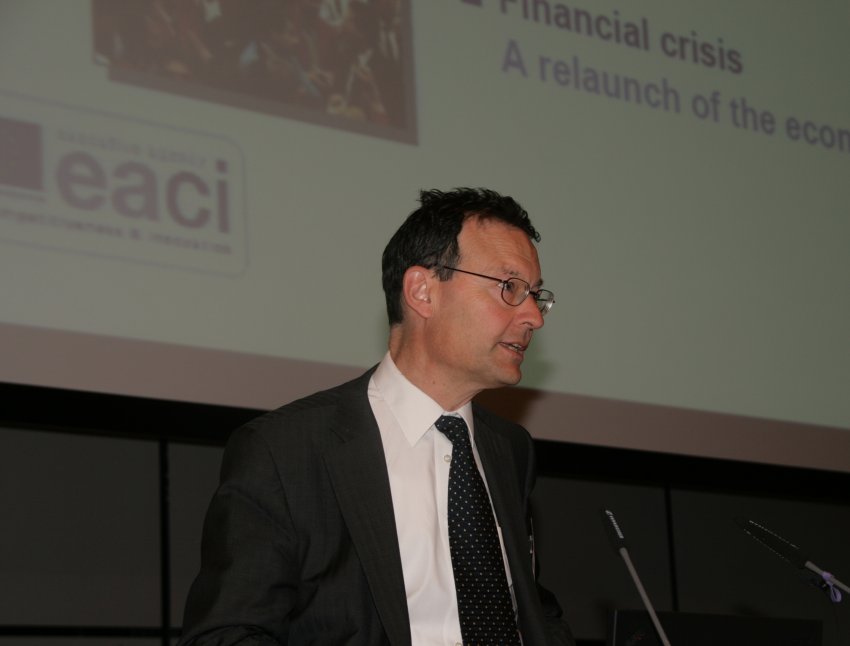 On
behalf of the European Commission, EACI
director Patrick Lambert (Photo) presented EU projects dealing
with the Passive House standard. The European Parliament prompted
the European Commission to establish the Passive House as
a mandatory standard for all new buildings that require heating
and/or cooling. On
behalf of the European Commission, EACI
director Patrick Lambert (Photo) presented EU projects dealing
with the Passive House standard. The European Parliament prompted
the European Commission to establish the Passive House as
a mandatory standard for all new buildings that require heating
and/or cooling.
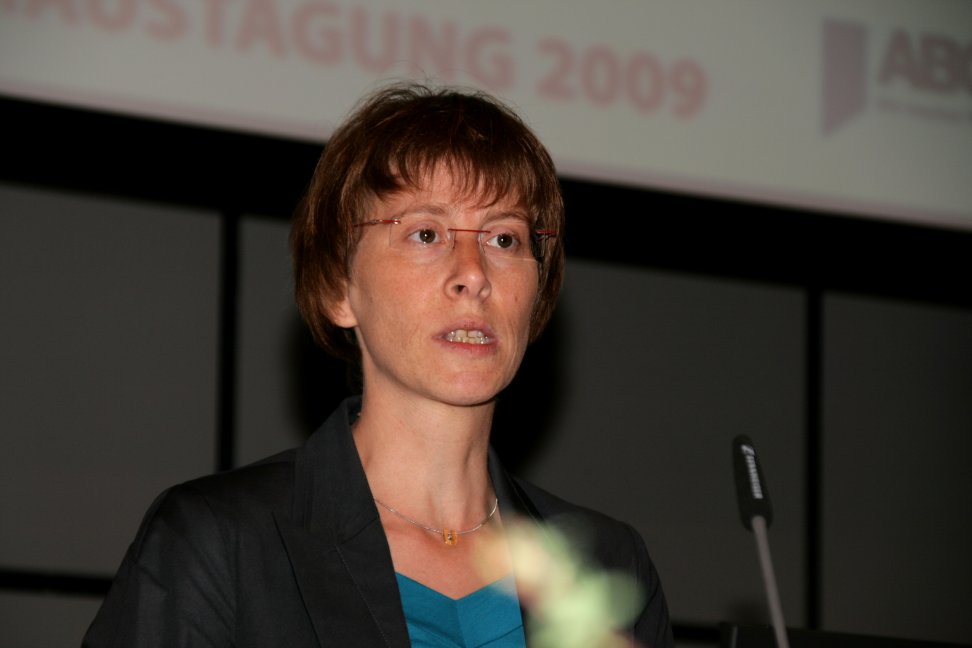 At
the opening session of the conference the environment minister
of Hesse, Silke Lautenschläger (Photo), emphasized that
the implementation of the Passive House standard is and investment
in the future, especially concerning the refurbishment of
existing buildings. At
the opening session of the conference the environment minister
of Hesse, Silke Lautenschläger (Photo), emphasized that
the implementation of the Passive House standard is and investment
in the future, especially concerning the refurbishment of
existing buildings.
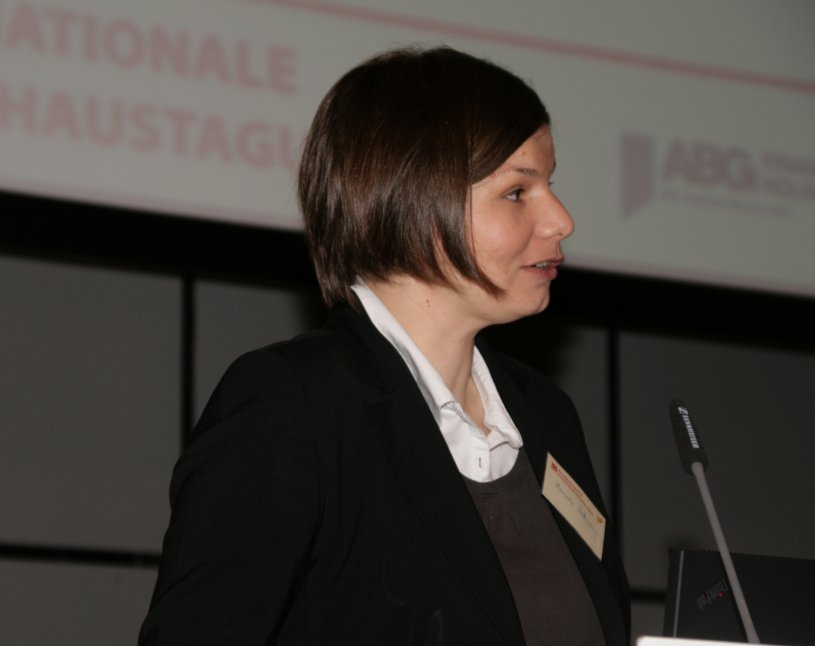 The
city of Frankfurt's commitment to the Passive House standard
goes beyond the existing resolutions. 1,300 domiciles are
expected to be built in Passive House standard by 2013, as
pointed out during the opening plenary session by the Head
of Environment and Wealth of the city of Frankfurt, Dr. Manuela
Rottmann (Photo). The
city of Frankfurt's commitment to the Passive House standard
goes beyond the existing resolutions. 1,300 domiciles are
expected to be built in Passive House standard by 2013, as
pointed out during the opening plenary session by the Head
of Environment and Wealth of the city of Frankfurt, Dr. Manuela
Rottmann (Photo).
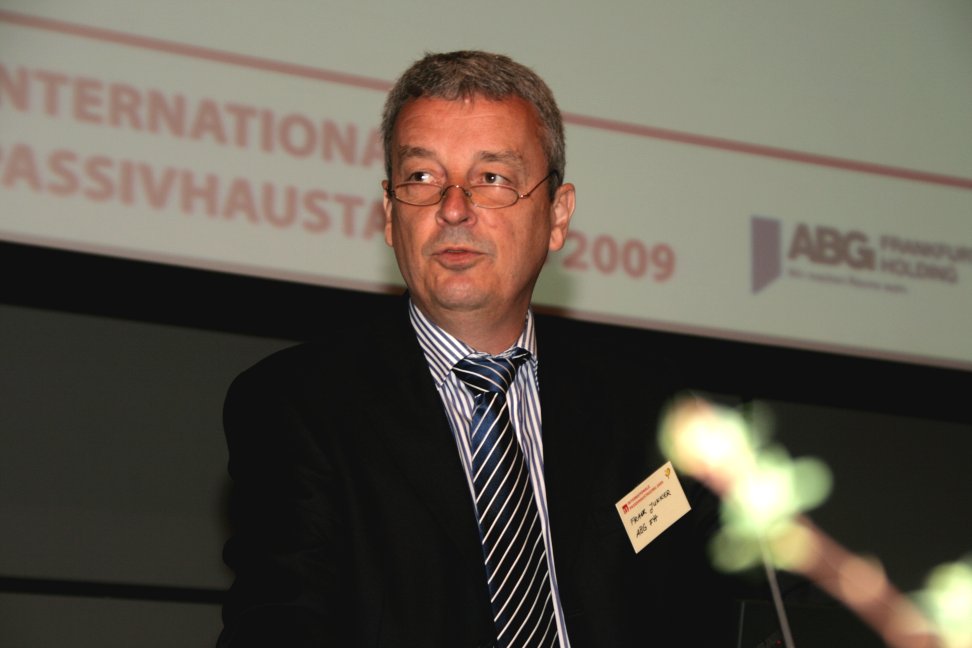 The
CEO of ABG
Frankfurt Holding, Frank Junker (Photo), reported how sceptic
he was at first towards the concept of Passive Houses. After
collecting positive experiences from his company's projects,
he decided to build only Passive Houses from then on. The
CEO of ABG
Frankfurt Holding, Frank Junker (Photo), reported how sceptic
he was at first towards the concept of Passive Houses. After
collecting positive experiences from his company's projects,
he decided to build only Passive Houses from then on.
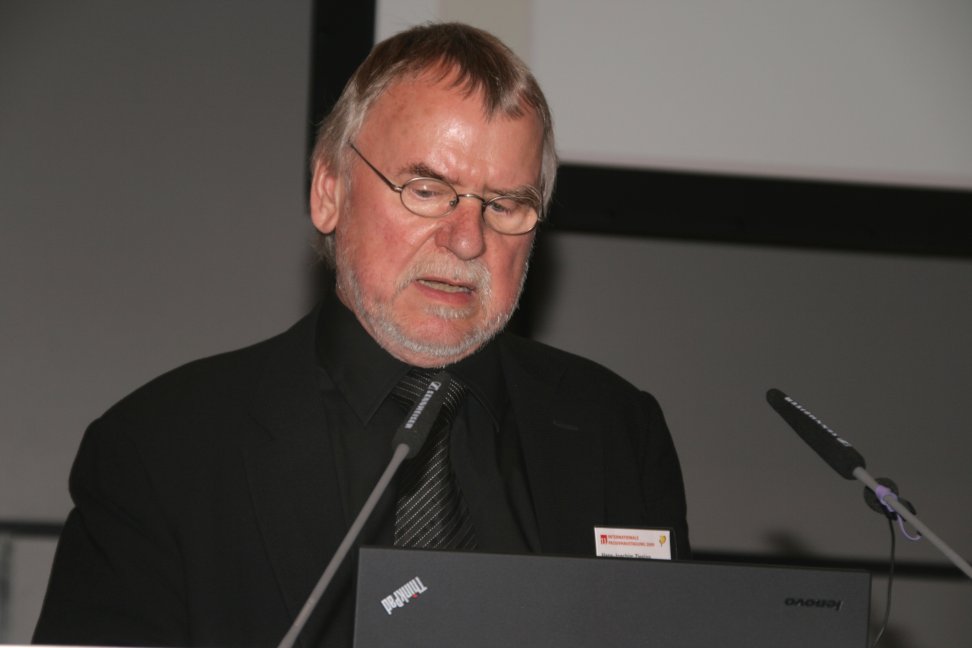 The
previous Senior Executive of the DIW (Deutsches Institut für
Wirtschaftsforschung) Berlin, Dr. Hans-Joachim Ziesing (Photo),
pointed out the economic requirement for a reaction to climate
change. It costs 1 billion to stop or to minimize the effects
of climate change, however, at least 5 billion would be spent
waiting for the damages to occur. The
previous Senior Executive of the DIW (Deutsches Institut für
Wirtschaftsforschung) Berlin, Dr. Hans-Joachim Ziesing (Photo),
pointed out the economic requirement for a reaction to climate
change. It costs 1 billion to stop or to minimize the effects
of climate change, however, at least 5 billion would be spent
waiting for the damages to occur.
Climate protection
policies in public space
During the last decade 800
apartments, two schools and several day care centres in Passive
House standard were built in Frankfurt/Main.
Looking only at Frankfurt, there are to this date over 100,000
square meters of floor space in different Passive House building
types. According to the Chief of the Energy Department of
the city of Frankfurt, Dr. Werner Neuman, this development
resulted from the decision to invest in energy efficiency
as quintessence of climate protection policies, as well as
the resolutions to make the implementation of the Passive
House standard mandatory.
In the working group session "Initiatives and energy-efficient
building in public buildings", it was striking how many
of the audience members working for town councils or other
public authorities voiced their request for the exchange of
experiences (e.g. 'How does one implement the concept in public
authorities?' 'How does one assemble a professional team?')
Passive House for
non residential buildings
Oliver Kah (PHI) highlighted
some questions concerning the implementation of the Passive
House standard in sports halls: A classic Passive House solution,
where the building can be heated via the supply air, is possible
and permits economically optimised buildings. The required
supply air in the hall, changing rooms and showers are nearly
identical so that the supplied air can be reused by directing
it from the hall to the other areas before extraction.
Passive House experiences
of the city of Hanover were presented by Stefan Bär (Landeshauptstadt
Hannover). All pilot projects have already been completed
so that municipal buildings are now being constructed according
the Passive House standard.
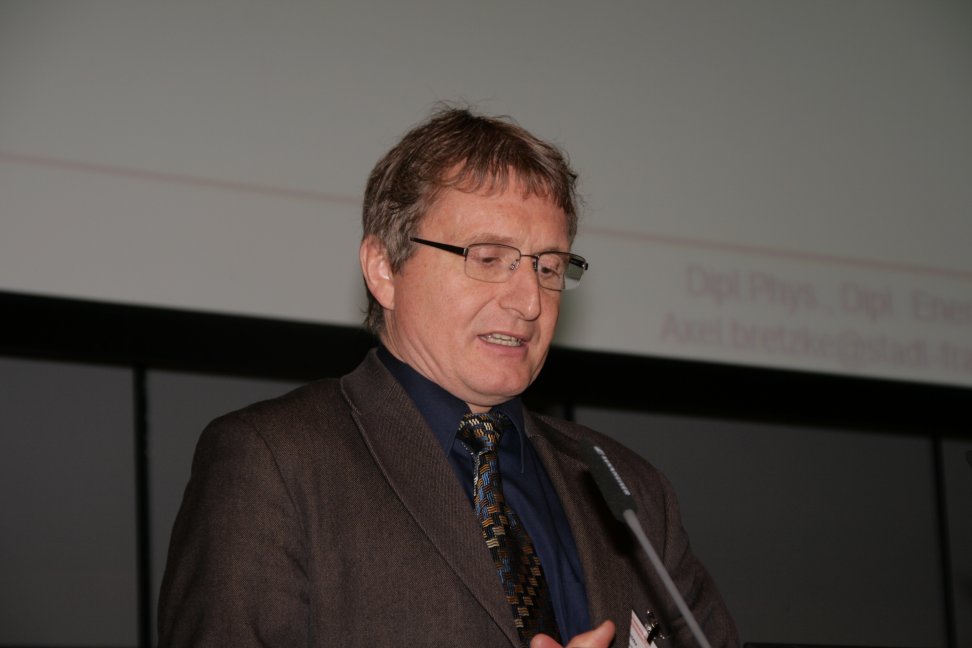 Axel
Bretzke (municipal
building department of the city of Frankfurt/ Photo) listed
the advantages of applying the Passive House standard to schools
and kindergartens: higher comfort, insignificant heating costs,
cost effectiveness and an essential contribution to climate
protection, with a reduction of heating costs by a factor
between 5 and 10 as compared to the valid German building
standard (EnEV). Proof is the Passive House primary school
in Riedberg (Photo: Architekten 4a). Axel
Bretzke (municipal
building department of the city of Frankfurt/ Photo) listed
the advantages of applying the Passive House standard to schools
and kindergartens: higher comfort, insignificant heating costs,
cost effectiveness and an essential contribution to climate
protection, with a reduction of heating costs by a factor
between 5 and 10 as compared to the valid German building
standard (EnEV). Proof is the Passive House primary school
in Riedberg (Photo: Architekten 4a).
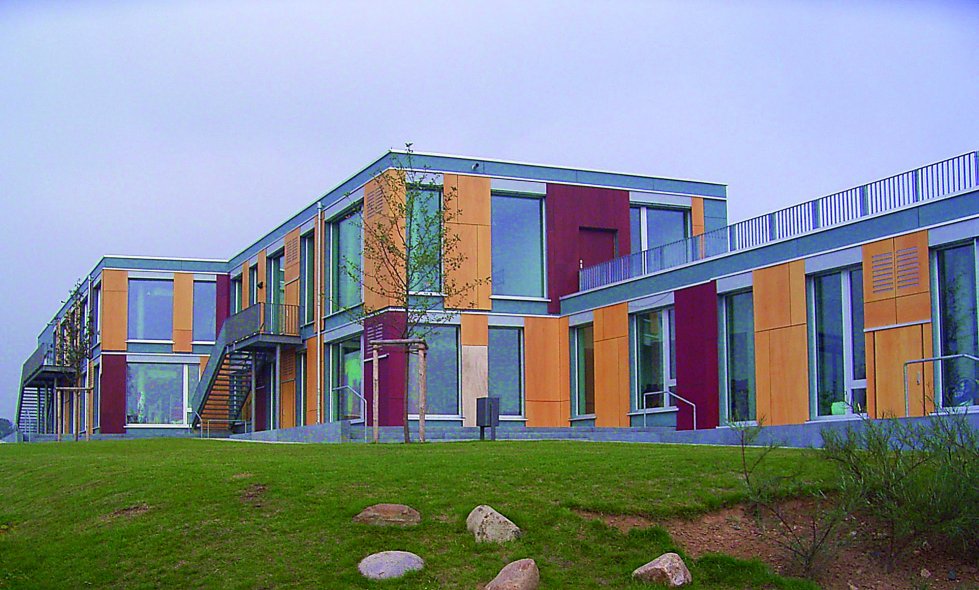
Passive Houses worldwide
What are the options for
Passive House construction in other climate zones? Is it possible
to build Passive Houses in the Mediterranean climate, in the
USA with its various climate zones, in Eastern Europe and
in notably cold regions (Finland, Denmark, Sweden. Artic,
Latvia)? What properties would such buildings have? For many
climates the Passive House standard has already been demonstrated
as viable, although in some regions the components and/or
research still needs to be improved.
Recent research
and development activities
Indoor swimming pools as
Passive Houses - is that possible? Tanja Schulz (PHI) took
on the challenge. Jürgen Schnieders (PHI) showed how
humidity recovery in ventilation systems influences a building's
energy balance. As long as no additional ventilation is required
for dehumidification, humidity recovery can reduce the heating
demand by about 1kWh/(m²a). Franz Freundorfer (PHC) introduced
a new window construction that combines low cost with a narrow
elevation width and thermal insulation suitable for Passive
Houses. Iris Behr (IWU) investigated a model for lump sum
rent including heating costs and reported about introducing
a flatrate for heating costs in Passive Houses and the resulting
savings on billing and management costs.
Refurbishment with
Passive House components
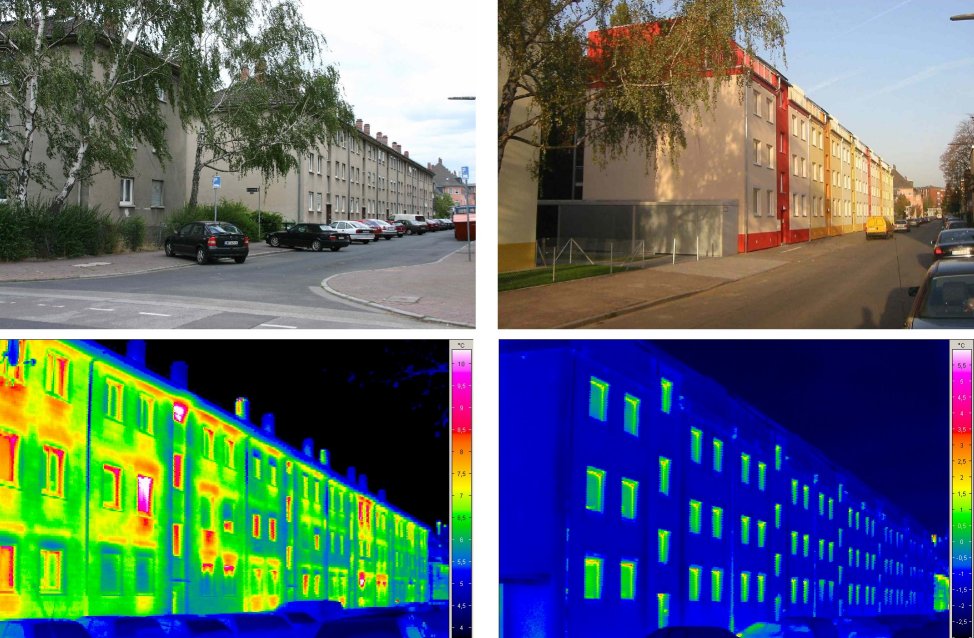 The
use of Passive House components in building refurbishment
implies a significant reduction of costs - this was demonstrated
by Dr. Berthold Kaufmann (PHI) and Søren Peper (PHI)
on the basis of the renovation project Tevesstrasse (Photo):
Thanks to the complete renovation with Passive House components
of 60 apartments (ABG-FH in Frankfurt) originally built in
the 1950s, the total heating demand according to PHPP was
reduced by more than 90%, from 290 kWh/(m²a) to 17 kWh/(m²a).
Measurements taken over a period of two years verify this
calculated result. The parallel renovation project in Ludwigshafen
(GAG) was equally successful. Both project reports can be
downloaded at www.passiv.de. The
use of Passive House components in building refurbishment
implies a significant reduction of costs - this was demonstrated
by Dr. Berthold Kaufmann (PHI) and Søren Peper (PHI)
on the basis of the renovation project Tevesstrasse (Photo):
Thanks to the complete renovation with Passive House components
of 60 apartments (ABG-FH in Frankfurt) originally built in
the 1950s, the total heating demand according to PHPP was
reduced by more than 90%, from 290 kWh/(m²a) to 17 kWh/(m²a).
Measurements taken over a period of two years verify this
calculated result. The parallel renovation project in Ludwigshafen
(GAG) was equally successful. Both project reports can be
downloaded at www.passiv.de.
Building services
Mark Siiddal (DEW JO'C Architects)
showed how important it is to ensure windproof insulation
and to seal the spacing between terraced houses. Faulty implementation
can easily double the heat losses, especially due to air circulation
around insulation boards in multi-layered masonry. Danny
Parker (Florida Solar Energy Center) presented an innovative
and cost-effective hybrid system for cooling and dehumidification,
which makes use of the building's attic for radiation cooling
during the night and for dehumidification with the daytime
solar heat gains.
More than 4,000
visitors at the Passive House Exhibition
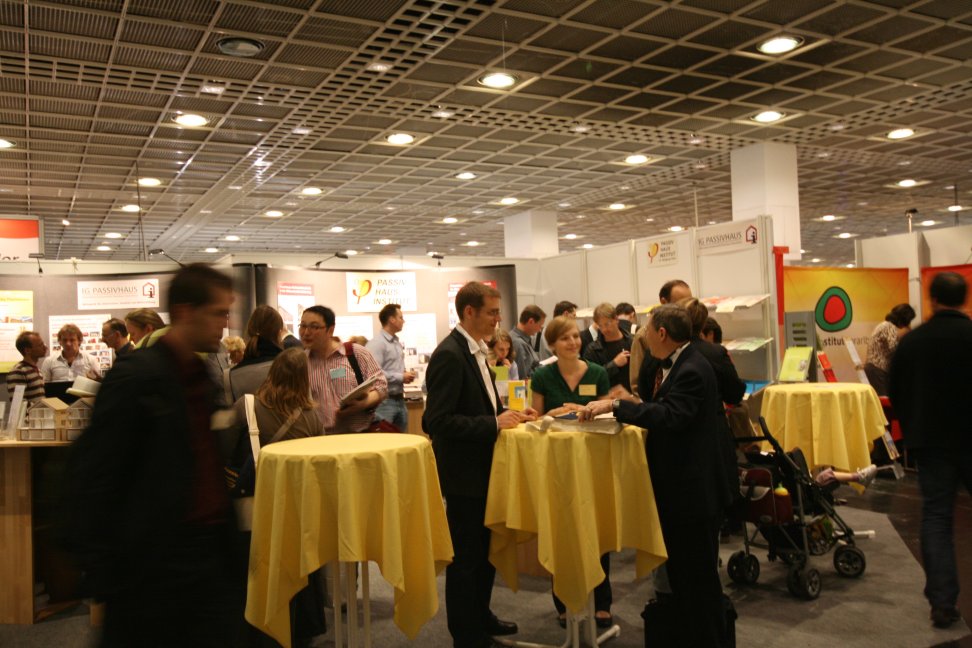 The
Passive House exhibition was very successful - 4,000 visitors
(Photo) including the conference attendees, who visited the
stands during the breaks, experts (architects, planers, students)
and families searched for information about products, high-efficiency
thermal insulation, heat-recovery ventilation systems, advanced
windows, solar plants and innovative heating technologies
from more than 100 exhibitors. The
Passive House exhibition was very successful - 4,000 visitors
(Photo) including the conference attendees, who visited the
stands during the breaks, experts (architects, planers, students)
and families searched for information about products, high-efficiency
thermal insulation, heat-recovery ventilation systems, advanced
windows, solar plants and innovative heating technologies
from more than 100 exhibitors.
Travelling Exhibition
Debut
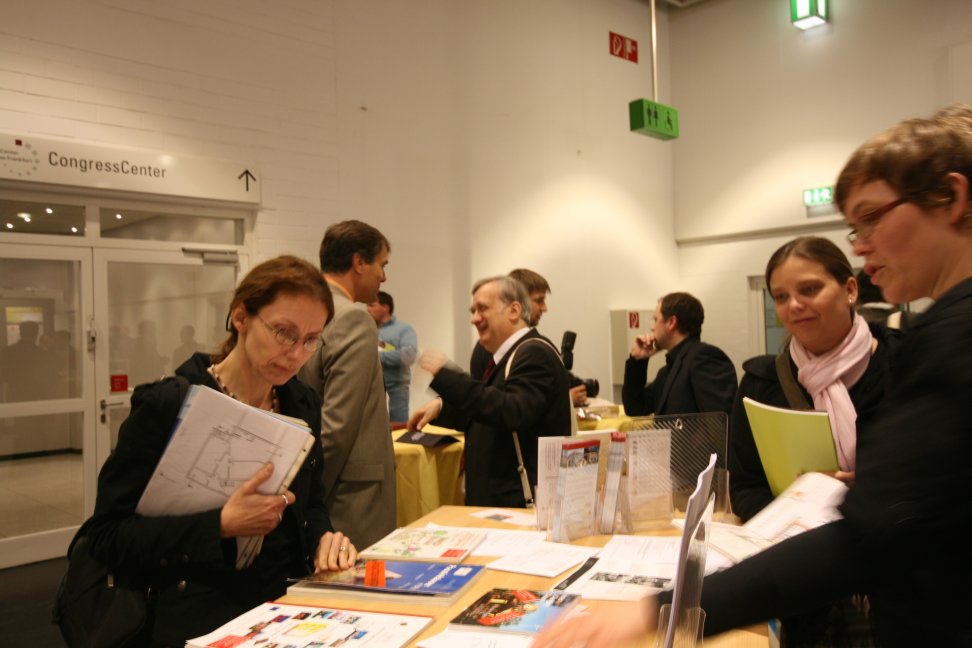 The
International Conference presented for the first time a Passive
House travelling exhibition (Photo), designed by the Passivhaus
Institut on behalf of the Hessische Ministerium für Umwelt,
Energie, Landwirtschaft und The
International Conference presented for the first time a Passive
House travelling exhibition (Photo), designed by the Passivhaus
Institut on behalf of the Hessische Ministerium für Umwelt,
Energie, Landwirtschaft und
Verbraucherschutz. Display boards and design models offered
easily understandable Information about Passive House principles.
Solutions were presented both for new construction and for
refurbishment of residential and non-residential buildings,
including costs, incentives and examples from Hessen. Display
boards are online available at www.passivhausausstellung.de.
 The
next International Passive House Conference will take
place on May, 28th and 29th 2010 in Dresden (Germany). Before
that Passive House dwellers worldwide open their homes during
the 6th International Passive House Days from 6th to 8th November
2009. Further information at www.ig-passivhaus.de. From September
2009 on, participating buildings can be found at www.passivhausprojekte.de. The
next International Passive House Conference will take
place on May, 28th and 29th 2010 in Dresden (Germany). Before
that Passive House dwellers worldwide open their homes during
the 6th International Passive House Days from 6th to 8th November
2009. Further information at www.ig-passivhaus.de. From September
2009 on, participating buildings can be found at www.passivhausprojekte.de.
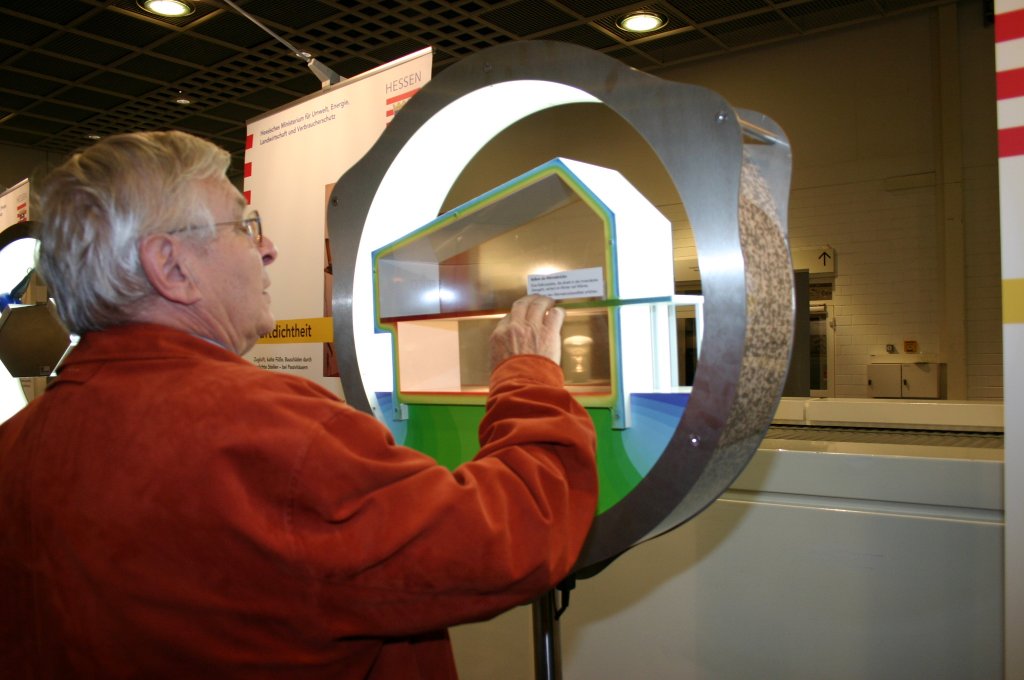
We would like to thank all
parties:
Partners,
sponsors,
helpers
Chairmen/Chairladies and speakers,
exhibitors and
an enthusiastic audience.
Conference
Proceedings of the 13th Passive House Conference
|